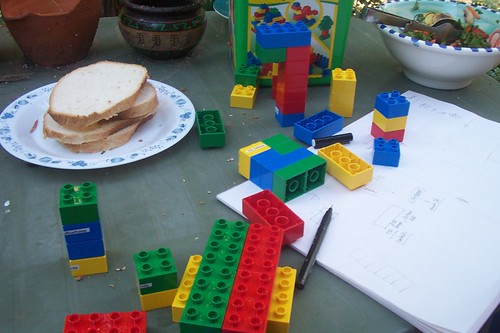Peter Renshaw uses Lego building blocks as a visual thinking tool.
Lego blocks allowed Peter and Russel to clearly visualize what they were trying to do. Think of it as three-dimensional sketching for object-oriented programming.
Assemble a whole lot of modules that can be plugged together to accomplish something.
Peter and Russell were inspired by SAP, the global enterprise software company. Over time, SAP has compiled a tightly integrated grid of modules which can be plugged together in various ways to build solutions.
Here's Peter on how they do it:
"There's no special meaning to the choice of colour or size of blocks, aside from the fact that we join the blocks together to see, and, more importantly, think, how they can come together. Each block or module is uncoupled. That means it does one thing and one thing well.
This is the advantage of using blocks. Click them together to see what you need to acheive a particular task. Its not quite UML and we may miss something. But its cheap, and if used intelligently, does the job."
Click here to look at the annotated photo and read more thoughts from Peter.
Keep in touch! Sign up to get updates and occasional emails from me.

2 comments:
Just visiting, but this is extremely reminiscent of the Douglas Coupland book, Microserfs.
Well, this is sooo bogus.... The important part of software is dynamic change of state over time, which you don't express this way.
Static modeling is pretty much the same as UML fairy tales that consultants use to get a good money for a couple of pictures.
Post a Comment